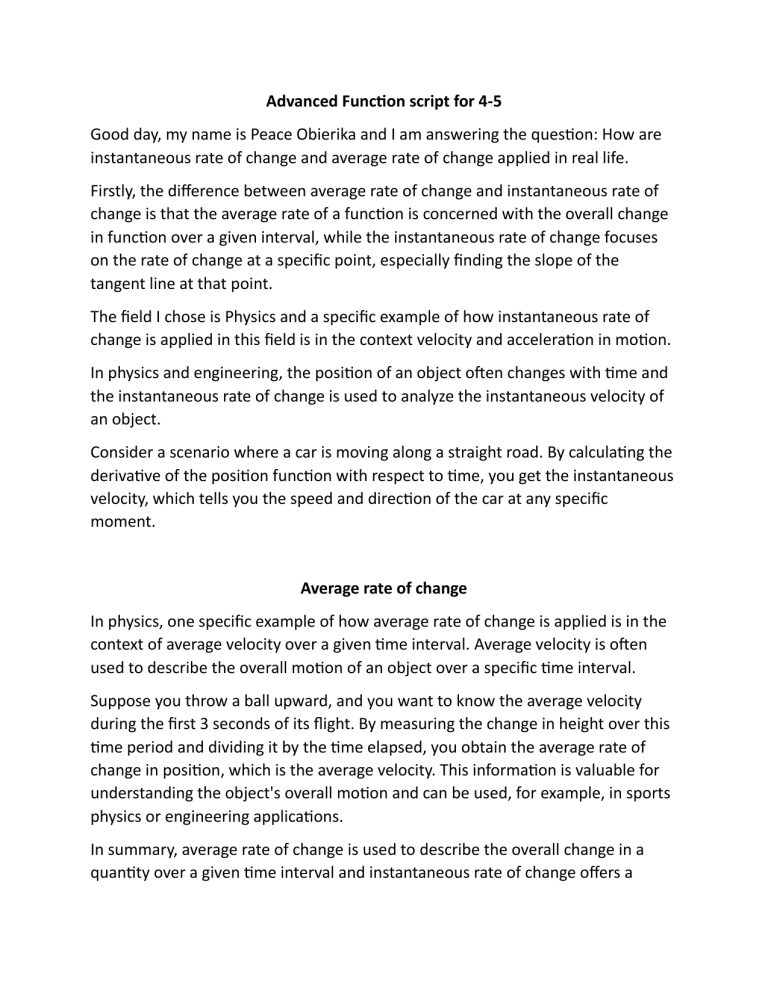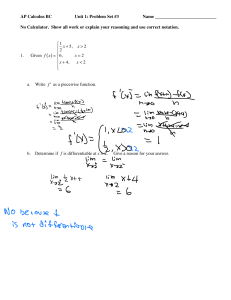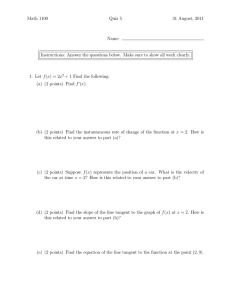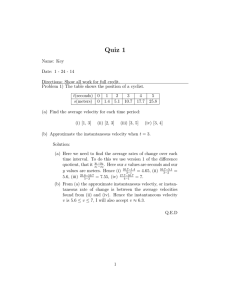
Advanced Function script for 4-5 Good day, my name is Peace Obierika and I am answering the question: How are instantaneous rate of change and average rate of change applied in real life. Firstly, the difference between average rate of change and instantaneous rate of change is that the average rate of a function is concerned with the overall change in function over a given interval, while the instantaneous rate of change focuses on the rate of change at a specific point, especially finding the slope of the tangent line at that point. The field I chose is Physics and a specific example of how instantaneous rate of change is applied in this field is in the context velocity and acceleration in motion. In physics and engineering, the position of an object often changes with time and the instantaneous rate of change is used to analyze the instantaneous velocity of an object. Consider a scenario where a car is moving along a straight road. By calculating the derivative of the position function with respect to time, you get the instantaneous velocity, which tells you the speed and direction of the car at any specific moment. Average rate of change In physics, one specific example of how average rate of change is applied is in the context of average velocity over a given time interval. Average velocity is often used to describe the overall motion of an object over a specific time interval. Suppose you throw a ball upward, and you want to know the average velocity during the first 3 seconds of its flight. By measuring the change in height over this time period and dividing it by the time elapsed, you obtain the average rate of change in position, which is the average velocity. This information is valuable for understanding the object's overall motion and can be used, for example, in sports physics or engineering applications. In summary, average rate of change is used to describe the overall change in a quantity over a given time interval and instantaneous rate of change offers a precise and instantaneous description of how a quantity is changing at a specific moment.




